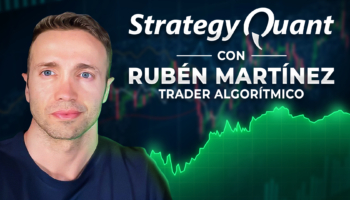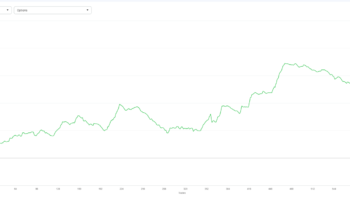In this article, we review realistic expectations from trading algorithmic systems through portfolios. We will describe what returns can be expected for different account sizes and different risk settings.
The author of this article is Marek Chrastina – The multiple-times Top 3 finalist in the World Cup Trading Championship®.
Futures trading entails some technical specificities that need to be considered and accounted for. Thus, the size of the account directly influences what instruments can be traded in a given account. For accounts with a size in the tens of thousands of dollars (e.g. $10k – $60k), it is preferable and with reasonable risk to trade only portfolios composed of micro contracts. However, these are only available for a limited number of markets that can be used in portfolio composition.
Profits are a function of risk. This means risk level is the thing we have to set up at first. We use 2 measurements of risk. “Max. risk” and “actual risk” (volatility).
“Max. risk” is the calculated value, which gives us information on how much volatility a potential portfolio may need or achieve in the future and also the level when to turn the system or portfolio off. It is an artificially calculated number, and it did not happen in previous reality. For calculating this level we use Monte Carlo methodology.
“Actual risk” or “average risk” or volatility measures the actual maximum drawdown in some period. Usually, this number is around 50% – 70% of max risk. This is a real drawdown which happened in reality, and real volatility. In other words, the max risk is usually 1.5 – 2 times higher than typical volatility which occurs during trading.
So let’s take a look at what risk-reward to expect for which types of portfolios. For simplicity, we will divide portfolios into three basic categories:
- Micro portfolios – portfolios trading markets that allow trading of micro/mini contracts
- Standard Portfolio – can include almost all futures markets with sufficient liquidity
- Multiportfolio – is a combination of multiple portfolios containing different trading systems for better diversification
For micro portfolios / small accounts is very realistic to expect maximum risk: annual return. (after fees) = 1:1 and average volatility: average annual reward is 1:2.
For higher accounts $100k+, we can use standard portfolios. Standard portfolios have several advantages in comparison to micro contracts portfolios, which are:
- better options for diversification – more markets able to involve to portfolio; more types of systems able to trade
- lower commissions
These advantages also have a positive effect on the expected risk reward for this type of portfolio compared to micro portfolios. The ratio of maximum risk to average annual performance here ranges from 1:1 to 1:3. It depends on the width of the portfolio. The median and therefore a value close to reality will be somewhere around 1:1.5 to 1:2.
On the other hand, the ratio of average historical volatility to average annual expected return for this type of portfolio is usually between 1:3 – 1:4.
Standard multi-portfolios can be considered starting at a capitalization of $200k+ for an aggressive overall maximum risk setting, or at a higher capitalization for more conservative trading. More on appropriate capitalization in a separate article where I discuss this in detail.
However, multi-portfolios bring more synergies manifested in better stability and less volatility of results as well as better risk-adjusted profit versus a single portfolio. They are complex investment products especially suitable for funds or investors with higher accounts trading higher tens of algorithms.
Clearly, quantifying maximum risk-to-return ratios is slightly more complicated here due to the various biases and other aspects of this complex product that enter into the calculations and make it difficult to quantify these metrics in an exact manner. Thus, such portfolios need to be individually managed at the component level. The ratio of historical volatility to returns, however, is easy to quantify and its value depends on the number of portfolios in any given multi-portfolio.
However, it is possible to summarise in general and simplistic terms that the ratio of maximum risk to expected annual appreciation can be 1:2.5+ and the ratio of current volatility to average annual performance can be 1:4+.
Minimum recommended capitalization (USD) Max risk / AANP Volatility / AANP Amount of algos in portfolio
|
Minimal recommended capitalization (USD) |
Max risk / AANP |
Volatility / AANP |
Amount of algos in portfolio |
| Micro portfolio |
$10k – $60k |
1:1 |
1:2 |
7 + |
| Standard portfolio |
$100k + |
1:1.5 – 1:2 |
1:3 – 1:4 |
7 + |
| Multiportfolio |
$200k + |
1:2.5 + |
1:4 + |
30 + |
* AANP = average annual net profit



